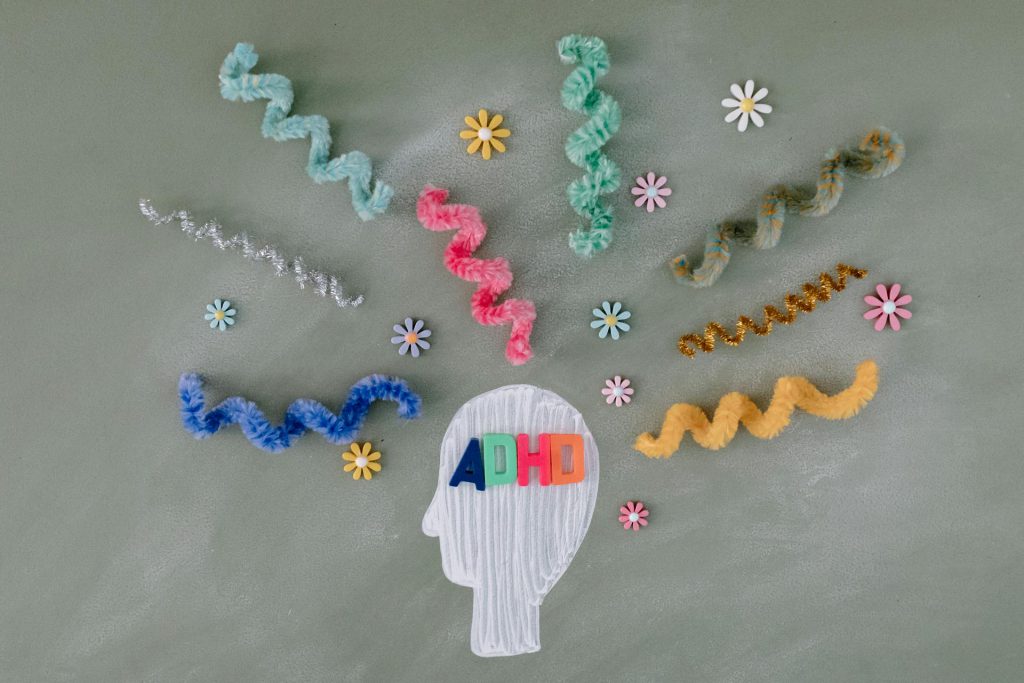Alzheimer’s Therapy
Alzheimer’s disease, a progressive neurodegenerative disorder, presents significant challenges for both individuals diagnosed and their caregivers. While there’s no cure, Alzheimer’s therapy aims to manage symptoms, slow cognitive decline, and enhance quality of life. This multifaceted approach encompasses various strategies, ranging from pharmacological interventions to supportive therapies.
Pharmacological interventions focus on managing cognitive and behavioral symptoms. Cholinesterase inhibitors, like donepezil, rivastigmine, and galantamine, are often prescribed to improve cognitive function by increasing levels of acetylcholine, a neurotransmitter crucial for memory and learning. Memantine, an NMDA receptor antagonist, is used to regulate glutamate activity, protecting brain cells from excessive stimulation and slowing cognitive decline. These medications, while not a cure, can provide temporary relief and improve daily functioning.
Time to feel better. Find a mental, physical health expert that works for you.
Beyond medication, supportive therapies play a vital role in Alzheimer’s management. Cognitive stimulation therapy (CST) involves engaging individuals in group activities designed to stimulate memory and thinking skills. Reminiscence therapy utilizes life stories, photos, and music to evoke memories and promote communication. Validation therapy focuses on acknowledging and validating the emotional experiences of individuals with Alzheimer’s, fostering a sense of connection and reducing anxiety.
Occupational therapy helps individuals maintain independence in daily activities. Therapists assess functional abilities and provide adaptive strategies and assistive devices to support tasks like dressing, eating, and bathing. Physical therapy focuses on maintaining mobility and preventing falls, which are common in later stages of the disease. Speech therapy addresses communication difficulties, helping individuals maintain their ability to express themselves and understand others.
Behavioral interventions are crucial for managing challenging behaviors like agitation, aggression, and wandering. Creating a structured environment, establishing routines, and using redirection techniques can help minimize these behaviors. Caregivers are often trained in these techniques to ensure consistent and effective management.
Music therapy has shown promise in reducing agitation, improving mood, and stimulating memories. The familiar melodies and rhythms can evoke emotional responses and enhance communication. Art therapy provides a creative outlet for self-expression, fostering emotional well-being and reducing stress.
Caregiver support is an integral part of Alzheimer’s therapy. Caregivers face significant emotional and physical strain, and support groups, counseling, and respite care can provide essential relief. Education and training on Alzheimer’s disease and caregiving strategies empower caregivers to provide optimal support.
Ultimately, Alzheimer’s therapy is a holistic approach that focuses on maintaining dignity, maximizing independence, and improving the overall quality of life for individuals with the disease and their caregivers. A combination of pharmacological, supportive, and behavioral interventions, along with strong caregiver support, creates a comprehensive framework for managing the complexities of Alzheimer’s disease.
What is Alzheimer’s Disease?
Alzheimer’s disease is a progressive neurodegenerative disorder, the most common cause of dementia, characterized by the gradual decline of cognitive function.
It’s not a normal part of aging, but rather a complex disease that progressively damages brain cells, leading to memory loss, confusion, and behavioral changes.
The hallmark of Alzheimer’s is the accumulation of abnormal protein structures in the brain. These include amyloid plaques, which are clumps of beta-amyloid protein that build up between nerve cells, and neurofibrillary tangles, which are twisted fibers of tau protein that accumulate inside brain cells. These disruptions interfere with communication between neurons, ultimately leading to cell death and brain atrophy.
The disease typically begins with subtle symptoms, often mistaken for normal age-related forgetfulness. Early signs may include difficulty remembering recent events, names, or conversations. As the disease progresses, memory loss becomes more pronounced, affecting both short-term and long-term memory. Individuals may struggle with spatial awareness, lose track of time, and have difficulty with problem-solving and decision-making.
Cognitive decline extends beyond memory loss. Individuals with Alzheimer’s may experience difficulties with language, such as finding the right words or understanding complex sentences. They may also struggle with visuospatial skills, like navigating familiar environments or recognizing faces. Changes in personality and behavior are common, including irritability, anxiety, depression, and agitation.
The progression of Alzheimer’s is gradual, typically spanning several years. The disease is often categorized into stages: early, middle, and late. In the early stages, individuals may maintain a degree of independence, but as the disease advances, they become increasingly dependent on caregivers. In the late stages, individuals may lose the ability to speak, walk, or swallow, requiring around-the-clock care.
While the exact cause of Alzheimer’s is not fully understood, several risk factors have been identified. Age is the strongest risk factor, with the risk doubling every five years after age 65. Genetic factors also play a role, particularly in early-onset Alzheimer’s, which affects individuals younger than 65. Lifestyle factors, such as cardiovascular health, diet, and exercise, are also believed to contribute to the risk.
Currently, there is no cure for Alzheimer’s disease. Treatments focus on managing symptoms and slowing the progression of cognitive decline. Early diagnosis and intervention are crucial for maximizing the effectiveness of available therapies and providing support to individuals and their families. Ongoing research is essential for developing new and more effective treatments for this devastating disease.
What Causes Alzheimer’s Disease?
Alzheimer’s disease, the most prevalent form of dementia, remains a complex and poorly understood condition. While a definitive cure eludes researchers, significant strides have been made in identifying potential causes and risk factors. The disease’s intricate nature suggests a confluence of genetic, environmental, and lifestyle influences.
The primary culprits implicated in Alzheimer’s pathology are the accumulation of amyloid plaques and neurofibrillary tangles within the brain.
Amyloid plaques are dense, insoluble clumps of beta-amyloid protein that accumulate between neurons, disrupting communication. Neurofibrillary tangles, on the other hand, are twisted fibers of tau protein that form inside brain cells, impairing their transport system. These protein abnormalities disrupt synaptic function and ultimately lead to neuronal death and brain atrophy.
Genetic factors play a significant role, especially in early-onset Alzheimer’s, which manifests before the age of 65. Mutations in genes like APP, PSEN1, and PSEN2 are strongly associated with this form of the disease. However, late-onset Alzheimer’s, the more common form, is also influenced by genetic predispositions, albeit through more complex interactions. The APOE-e4 gene variant, for instance, significantly increases the risk, but does not guarantee the development of the disease.
Beyond genetics, environmental factors are increasingly recognized as potential contributors. Exposure to heavy metals, pollutants, and certain viruses has been investigated, though conclusive evidence remains elusive. Head injuries, particularly repeated traumatic brain injuries, have also been linked to an increased risk of Alzheimer’s.
Lifestyle factors, particularly those affecting cardiovascular health, are also implicated. Conditions like high blood pressure, high cholesterol, diabetes, and obesity are associated with increased risk. This suggests that maintaining a healthy lifestyle, including a balanced diet, regular exercise, and stress management, may play a protective role.
Inflammation is another area of active research. Chronic inflammation in the brain may contribute to the development of amyloid plaques and neurofibrillary tangles. The role of the brain’s immune system, microglia, is being intensely studied.
The gut microbiome is emerging as a potential factor. Research suggests a link between gut bacteria composition and the development of Alzheimer’s. The gut-brain axis, the bidirectional communication between the gut and the brain, may influence neuroinflammation and amyloid deposition.
Ultimately, Alzheimer’s disease is likely caused by a complex interplay of multiple factors. While genetic predispositions may increase susceptibility, environmental exposures and lifestyle choices can significantly influence the risk. Ongoing research aims to identify the precise mechanisms underlying the disease, paving the way for effective prevention and treatment strategies.
Connect Free. Improve your mental and physical health with a professional near you

At What Age Does Alzheimer’s Disease Usually Present?
When discussing Alzheimer’s disease, it’s essential to distinguish between two primary categories based on the age of onset: late-onset and early-onset. Understanding this distinction is crucial for both diagnosis and awareness.
Late-Onset Alzheimer’s Disease:
- This is the most common form of Alzheimer’s, and it typically manifests in individuals aged 65 and older.
- The risk of developing late-onset Alzheimer’s increases significantly with age. In fact, the risk roughly doubles every five years after the age of 65.
- While genetic factors can play a role, they are often more complex and involve a combination of gene variations rather than single-gene mutations.
Early-Onset Alzheimer’s Disease:
- This form of Alzheimer’s disease occurs when symptoms begin before the age of 65. In rare cases, it can appear as early as a person’s 30s or 40s.
- Early-onset Alzheimer’s is less common than late-onset.
- Genetic factors often play a more significant role in early-onset Alzheimer’s. Specific gene mutations (in genes such as APP, PSEN1, and PSEN2) are strongly linked to its development. If a person inherits one of these mutated genes, they have a much higher probability of developing the disease.
Key Points to Remember:
- Age is the strongest known risk factor for Alzheimer’s disease.
- While most cases occur in older adults, younger individuals can also develop the disease.
- Genetic factors are more influential in early-onset Alzheimer’s than in late-onset cases.
- Regardless of the age of onset, early diagnosis and intervention are vital for managing symptoms and providing appropriate support.
It’s important to remember that recognizing the early signs of Alzheimer’s disease, regardless of age, is important. Any concerns about memory or cognitive changes should always be discussed with a doctor.
How is Alzheimer’s Disease Diagnosed?
Diagnosing Alzheimer’s disease is a complex process, as there isn’t a single, definitive test. It involves a comprehensive evaluation that combines medical history, cognitive assessments, and brain imaging to rule out other potential causes and establish a diagnosis. Early and accurate diagnosis is crucial for maximizing the benefits of available treatments and providing appropriate support.
The diagnostic process typically begins with a thorough medical history.
This includes gathering information about the individual’s symptoms, their onset, and their progression. Family history is also important, particularly in cases of early-onset Alzheimer’s. A physical examination is conducted to rule out other medical conditions that may mimic dementia symptoms, such as thyroid problems, vitamin deficiencies, or infections.
Cognitive assessments are a cornerstone of Alzheimer’s diagnosis. These tests evaluate various cognitive functions, including memory, attention, language, and problem-solving skills. The Mini-Mental State Examination (MMSE) and the Montreal Cognitive Assessment (MoCA) are commonly used screening tools. These assessments help identify cognitive impairments and track their progression over time.
Neurological examinations are also conducted to assess reflexes, coordination, and other neurological functions. These examinations help rule out other neurological conditions that may cause similar symptoms.
Brain imaging techniques play an increasingly important role in Alzheimer’s diagnosis. Magnetic resonance imaging (MRI) and computed tomography (CT) scans can reveal brain atrophy and other structural changes associated with Alzheimer’s. Positron emission tomography (PET) scans can detect amyloid plaques and tau tangles in the brain, which are hallmarks of the disease.
In some cases, cerebrospinal fluid (CSF) analysis may be performed to measure levels of beta-amyloid and tau proteins, which can provide further diagnostic information. Blood tests are also done to test for other conditions that can cause dementia like symptoms.
It’s important to note that the diagnostic process may involve a team of healthcare professionals, including neurologists, geriatricians, and neuropsychologists. This multidisciplinary approach ensures a comprehensive evaluation and accurate diagnosis.
While a definitive diagnosis of Alzheimer’s disease can only be confirmed through autopsy, the combination of clinical assessments and imaging techniques can provide a high degree of diagnostic accuracy during a patient’s life. Ongoing research is focused on developing more sensitive and specific diagnostic tools, including blood tests and biomarkers, to facilitate earlier and more accurate diagnoses.
What Happens During the Various Stages of Alzheimer’s?
Alzheimer’s disease progresses through distinct stages, each characterized by a gradual decline in cognitive and functional abilities.
Understanding these stages is crucial for providing appropriate care and support to individuals and their families.
Early Stage (Mild Alzheimer’s):
In the early stage, individuals may experience subtle cognitive changes that are often mistaken for normal aging. Memory lapses, particularly for recent events, are common. Difficulty with word-finding, problem-solving, and spatial awareness may also emerge. Individuals may struggle with complex tasks, like managing finances or planning events. However, they typically maintain independence in daily activities.
Emotional changes, such as irritability, anxiety, and depression, can also occur. Individuals may become withdrawn or lose interest in previously enjoyed activities. This stage can be particularly challenging as individuals are often aware of their cognitive decline, leading to frustration and fear.
Middle Stage (Moderate Alzheimer’s):
As the disease progresses, cognitive decline becomes more pronounced. Memory loss becomes more significant, affecting both short-term and long-term memory. Individuals may struggle to recognize familiar faces or places. Communication difficulties increase, with more frequent word-finding problems and difficulty understanding complex language.
Behavioral changes become more apparent. Agitation, restlessness, and wandering are common. Individuals may experience sleep disturbances and become confused about time and place. Assistance with daily activities, such as dressing, bathing, and eating, becomes necessary.
Late Stage (Severe Alzheimer’s):
In the late stage, cognitive decline is severe. Individuals lose the ability to communicate effectively and may only speak in single words or phrases. They become increasingly dependent on caregivers for all aspects of daily living, including eating, dressing, and toileting.
Physical abilities also decline. Individuals may lose the ability to walk, sit, or swallow. They may become incontinent and require around-the-clock care. Individuals may become vulnerable to infections, like pneumonia.
Personality changes can become extreme. They might not recognize close family members.
End-Stage Alzheimer’s:
In the final stage, individuals are often bedridden and require constant care. Communication is minimal, and they may be unresponsive. The focus shifts to providing comfort and palliative care.
It’s important to remember that the progression of Alzheimer’s disease varies among individuals. Some individuals may progress through the stages more rapidly than others. Providing compassionate and supportive care throughout each stage is essential for maintaining the individual’s dignity and quality of life.
What is the Average Life Expectancy for Alzheimer’s Patients?
The question of average life expectancy for Alzheimer’s patients is a complex one, as it’s influenced by a multitude of intersecting factors. While a single, definitive number is elusive, understanding the variables at play provides a more nuanced perspective.
Age at diagnosis is a primary determinant. Individuals diagnosed at a younger age, while potentially facing a longer disease progression, don’t necessarily experience prolonged lifespans. Conversely, those diagnosed later in life may have pre-existing health conditions that shorten their overall survival.
Comorbidities, or coexisting health conditions, significantly impact life expectancy. Conditions such as cardiovascular disease, diabetes, and other chronic illnesses weaken the body’s resilience, increasing vulnerability to complications. Therefore these co-morbidities can effect the lifespan of a patient.
The stage of Alzheimer’s at diagnosis is also a relevant consideration. Early diagnosis, while allowing for proactive symptom management and care planning, doesn’t inherently extend lifespan. However, it can optimize quality of life during the earlier stages. Late-stage diagnosis often correlates with heightened susceptibility to complications like pneumonia, infections, and falls, which can be life-threatening.
Quality of care plays a pivotal role. Access to comprehensive medical treatment, supportive therapies, and dedicated caregiver support profoundly impacts patient well-being and longevity. Proper nutrition, hydration, and vigilant infection control are essential, especially in the disease’s later phases.
Generally, individuals diagnosed with Alzheimer’s disease live for approximately 4 to 8 years following diagnosis. However, this is an average, and individual experiences exhibit significant variability. Some may live for 20 years or more, while others may survive for shorter durations.
It’s crucial to acknowledge that Alzheimer’s disease itself is seldom the direct cause of death. Instead, it increases vulnerability to other life-threatening conditions. Complications arising from the disease, such as infections or injuries, often contribute to mortality.
In essence, life expectancy for Alzheimer’s patients is a dynamic and individualized consideration. While statistical averages provide some guidance, they don’t capture the intricacies of each patient’s experience. A focus on maximizing quality of life, providing compassionate care, and addressing comorbidities is paramount.
Methods Used in Alzheimer’s Therapy:
Alzheimer’s therapy employs a multifaceted approach, aiming to manage symptoms, slow cognitive decline, and enhance the quality of life for individuals and their caregivers. While a cure remains elusive, various methods are utilized to address the diverse challenges posed by the disease.
Pharmacological Interventions:
Medications play a crucial role in managing cognitive and behavioral symptoms. Cholinesterase inhibitors, such as donepezil, rivastigmine, and galantamine, are commonly prescribed to boost acetylcholine levels, a neurotransmitter vital for memory and learning. Memantine, an NMDA receptor antagonist, regulates glutamate activity, protecting brain cells from excessive stimulation. These medications offer symptomatic relief, although their effectiveness varies among individuals.
Cognitive Stimulation Therapy (CST):
CST involves engaging individuals in group activities designed to stimulate cognitive function. These activities focus on memory, language, and problem-solving skills, promoting social interaction and mental engagement. CST aims to maintain cognitive abilities and improve overall well-being.
Reminiscence Therapy:
Reminiscence therapy utilizes life stories, photographs, music, and other familiar objects to evoke memories and stimulate conversation. This approach can enhance communication, reduce anxiety, and promote a sense of connection. It’s particularly beneficial for individuals in the middle to late stages of Alzheimer’s.
Validation Therapy:
Validation therapy acknowledges and validates the emotional experiences of individuals with Alzheimer’s, even if their perceptions of reality differ. This approach focuses on understanding and responding to their feelings, fostering a sense of empathy and reducing agitation.
Occupational Therapy:
Occupational therapists assess functional abilities and provide adaptive strategies and assistive devices to support daily activities. This helps individuals maintain independence in tasks like dressing, eating, and bathing, improving their quality of life.
Physical Therapy:
Physical therapy focuses on maintaining mobility, preventing falls, and improving balance. Exercise programs and assistive devices are used to enhance physical function and reduce the risk of injuries.
Behavioral Management:
Behavioral interventions address challenging behaviors like agitation, aggression, and wandering. Creating a structured environment, establishing routines, and using redirection techniques can minimize these behaviors. Caregiver training is essential for consistent and effective management.
Music and Art Therapy:
Music therapy can reduce agitation, improve mood, and evoke memories. Art therapy provides a creative outlet for self-expression, fostering emotional well-being and reducing stress. These therapies engage individuals in enjoyable activities, promoting relaxation and cognitive stimulation.
Caregiver Support:
Caregiver support is integral to Alzheimer’s therapy. Support groups, counseling, and respite care provide essential relief for caregivers, reducing stress and burnout. Education and training on Alzheimer’s disease and caregiving strategies empower caregivers to provide optimal support.
By employing these diverse methods, Alzheimer’s therapy aims to enhance the quality of life for individuals and their families, managing symptoms and promoting well-being throughout the disease’s progression.
Medications Used to Treat Alzheimer’s Disease:
While there’s no cure for Alzheimer’s disease, medications play a crucial role in managing cognitive and behavioral symptoms, aiming to improve quality of life and slow the progression of cognitive decline. These medications fall into two main categories: cholinesterase inhibitors and NMDA receptor antagonists.
Cholinesterase Inhibitors:
These medications work by increasing the levels of acetylcholine, a neurotransmitter essential for memory and learning. In Alzheimer’s disease, the production of acetylcholine is reduced, contributing to cognitive decline. Cholinesterase inhibitors prevent the breakdown of acetylcholine, thereby increasing its availability in the brain.
- Donepezil (Aricept): Commonly prescribed for all stages of Alzheimer’s, donepezil can improve memory, attention, and reasoning.
- Rivastigmine (Exelon): Available in capsule and patch forms, rivastigmine is used to treat mild to moderate Alzheimer’s.
- Galantamine (Razadyne): This medication is also used for mild to moderate Alzheimer’s and can improve cognitive function.
These medications are not a cure, and their effects are often modest and temporary. They may cause side effects, including nausea, vomiting, diarrhea, and loss of appetite. Regular monitoring is essential to manage side effects and assess effectiveness.
NMDA Receptor Antagonists:
Memantine (Namenda) is an NMDA receptor antagonist that regulates glutamate activity. Glutamate is another neurotransmitter involved in memory and learning. In Alzheimer’s disease, excessive glutamate activity can damage brain cells. Memantine helps protect brain cells from this damage.
- Memantine (Namenda): Typically prescribed for moderate to severe Alzheimer’s, memantine can improve cognitive function and reduce behavioral symptoms like agitation and aggression.
Memantine is often used in combination with cholinesterase inhibitors for optimal symptom management. It may cause side effects, including dizziness, headache, and constipation.
Other Medications:
Beyond these primary medications, other drugs may be prescribed to manage specific symptoms associated with Alzheimer’s disease.
- Antidepressants: Used to treat depression, which is common in Alzheimer’s patients.
- Antipsychotics: Prescribed to manage severe agitation, aggression, or hallucinations. However, these medications carry significant risks and are used cautiously.
- Anti-anxiety medications: Can help manage anxiety and restlessness.
Important Considerations:
- Medication management requires close collaboration between the healthcare provider, the individual with Alzheimer’s, and their caregivers.
- Regular monitoring is essential to assess medication effectiveness and manage side effects.
- Medications are only one component of Alzheimer’s therapy. Lifestyle modifications, supportive therapies, and caregiver support are equally important.
- Research continues to explore new medications and therapies to improve the lives of individuals with Alzheimer’s disease.
Should I Take My Loved One with Alzheimer’s Disease to a Therapist?
Navigating Alzheimer’s disease is a challenging journey for both the individual diagnosed and their loved ones. The question of whether to involve a therapist arises frequently, and the answer is often a resounding yes. Therapy can offer significant benefits, addressing the emotional and psychological complexities that accompany this progressive condition.
For the individual with Alzheimer’s, therapy can provide a safe space to express their fears, anxieties, and frustrations. As cognitive decline progresses, they may struggle to articulate their feelings, leading to increased agitation and distress.
A therapist trained in dementia care can use techniques like validation therapy and reminiscence therapy to connect with the individual, validate their emotions, and promote a sense of calm.
Therapy can also help manage behavioral symptoms. Alzheimer’s can trigger changes in mood, personality, and behavior, including agitation, aggression, and wandering. A therapist can work with the individual and their caregivers to develop strategies for managing these behaviors, creating a more peaceful and supportive environment.
Moreover, therapy can address the emotional toll on caregivers. Caring for someone with Alzheimer’s is physically and emotionally demanding, often leading to burnout, anxiety, and depression. A therapist can provide caregivers with coping mechanisms, stress management techniques, and emotional support. They can also facilitate family therapy sessions to improve communication and resolve conflicts.
Family therapy can be particularly beneficial in helping family members adjust to the changing dynamics of their relationships. Alzheimer’s affects the entire family, and therapy can provide a space for open communication, education, and support. It can help family members understand the disease, manage expectations, and develop strategies for coping with grief and loss.
It’s crucial to seek a therapist with experience in dementia care. They understand the unique challenges of Alzheimer’s and can tailor their approach to the individual’s cognitive abilities and needs. They can also collaborate with other healthcare professionals, such as neurologists and geriatricians, to provide comprehensive care.
While therapy cannot reverse the progression of Alzheimer’s, it can significantly improve the quality of life for both the individual and their caregivers. It can provide emotional support, manage behavioral symptoms, and strengthen family relationships. By addressing the psychological and emotional aspects of the disease, therapy can help families navigate this challenging journey with greater resilience and compassion.
What Should I Look for In a Therapist?
Finding the right therapist is a crucial step towards fostering mental and emotional well-being. It’s a deeply personal decision, and ensuring a good fit is paramount for effective therapy. However, navigating the search can feel overwhelming. Here’s a guide to what to look for when seeking a therapist.
Licensing and Credentials:
Begin by verifying the therapist’s credentials. Look for licensed professionals, such as Licensed Clinical Social Workers (LCSW), Licensed Professional Counselors (LPC), or Licensed Psychologists (PhD or PsyD). These licenses indicate they’ve met the necessary educational and training requirements. Also, ensure they are licensed to practice in your state.
Specialization and Expertise:
Consider the therapist’s area of specialization. Some therapists focus on specific issues, like anxiety, depression, trauma, or relationship problems. Matching your needs with their expertise is essential. For example, if you’re dealing with grief, seek a therapist specializing in grief counseling.
Therapeutic Approach:
Different therapists utilize various therapeutic approaches, including Cognitive Behavioral Therapy (CBT), Dialectical Behavior Therapy (DBT), psychodynamic therapy, and more. Research these approaches to determine which aligns with your preferences. Some therapists are eclectic, integrating multiple techniques.
Experience and Background:
Inquire about the therapist’s experience level. While newer therapists can be highly skilled, experienced therapists often possess a broader clinical perspective. Ask about their experience working with clients facing similar challenges to yours.
Compatibility and Rapport:
The therapeutic relationship is fundamental. During initial consultations, assess your comfort level. Do you feel heard and understood? Is there a sense of trust and empathy? A strong therapeutic alliance is crucial for open communication and progress.
Practical Considerations:
Practical factors are essential. Consider location, availability, and fees. Does the therapist accept your insurance? Are their office hours convenient? Teletherapy offers flexibility if in-person appointments are challenging.
Referrals and Recommendations:
Seek referrals from trusted sources, like your primary care physician, friends, or family members. Online directories and professional organizations can also provide lists of qualified therapists. Online reviews can offer insights, but interpret them cautiously.
Initial Consultation:
Most therapists offer an initial consultation, often free or at a reduced rate. Use this opportunity to ask questions, discuss your concerns, and assess compatibility. Don’t hesitate to interview multiple therapists.
Personal Connection:
Ultimately, trust your intuition. The right therapist will make you feel safe, supported, and understood. This personal connection is key to a successful therapeutic experience.
Finding the right therapist requires patience and self-reflection. By considering these factors, you can make an informed decision and embark on a journey of healing and growth.
Are There Any New Treatments for Alzheimer’s Disease?
The quest for effective Alzheimer’s disease treatments is a relentless pursuit, driven by the devastating impact of this neurodegenerative disorder. While a cure remains elusive, promising advancements are emerging, offering hope for improved management and potential disease modification.
One area of intense research focuses on targeting amyloid plaques and tau tangles, the hallmark pathological features of Alzheimer’s. Several monoclonal antibodies, such as lecanemab and aducanumab, have shown promise in reducing amyloid plaque burden in the brain. Lecanemab, in particular, has demonstrated modest but statistically significant slowing of cognitive decline in clinical trials. However, these treatments are not without controversy, as they can cause side effects like amyloid-related imaging abnormalities (ARIA), which involve brain swelling or microhemorrhages.
Another avenue of research explores tau-targeted therapies. Tau tangles, another key feature of Alzheimer’s, are increasingly recognized as critical drivers of neurodegeneration. Researchers are developing drugs that aim to prevent tau protein aggregation or promote its clearance from the brain. While still in early stages, these therapies hold potential for slowing disease progression.
Beyond amyloid and tau, researchers are investigating therapies targeting neuroinflammation. Chronic inflammation in the brain is believed to contribute to Alzheimer’s pathology. Drugs that modulate the immune system and reduce inflammation are being explored as potential treatments.
The role of the gut microbiome in Alzheimer’s is also gaining attention. Studies suggest a link between gut bacteria composition and the development of the disease. Probiotics and prebiotics are being investigated as potential interventions to modulate the gut-brain axis and reduce neuroinflammation.
Stem cell therapy is another area of active research. The goal is to replace damaged brain cells with healthy ones, potentially restoring cognitive function. While still in preclinical and early clinical trials, stem cell therapy holds promise for future Alzheimer’s treatment.
Lifestyle interventions are also being recognized for their potential to reduce Alzheimer’s risk and slow disease progression. Studies suggest that a healthy diet, regular exercise, and cognitive stimulation can promote brain health. Clinical trials are underway to evaluate the effectiveness of these interventions in delaying cognitive decline.
Early detection and prevention are increasingly emphasized. Biomarkers, such as blood tests and brain imaging techniques, are being developed to identify Alzheimer’s pathology before symptoms appear. This would allow for earlier intervention and potentially delay the onset of clinical symptoms.
While significant challenges remain, the landscape of Alzheimer’s research is evolving rapidly. The combination of targeted therapies, lifestyle interventions, and early detection strategies offers a glimmer of hope for a future where Alzheimer’s disease can be effectively managed or even prevented.
Monoclonal Antibodies
Monoclonal antibodies (mAbs) represent a revolutionary class of therapeutic agents, engineered to precisely target specific molecules within the body. Their ability to bind with high affinity and specificity has transformed the treatment of various diseases, from cancer to autoimmune disorders and infectious diseases.
The development of mAbs involves a sophisticated process.
First, an antigen, the target molecule, is identified. This could be a protein on the surface of a cancer cell, a viral protein, or a molecule involved in an inflammatory pathway. Next, an animal, typically a mouse, is immunized with the antigen, stimulating an immune response. B cells, which produce antibodies, are then harvested and fused with myeloma cells, creating hybridomas. These hybridomas produce mAbs that specifically target the antigen.
However, mouse-derived mAbs can trigger an immune response in humans, leading to adverse reactions. To mitigate this, scientists have developed techniques to humanize or fully human mAbs. Humanized mAbs replace most of the mouse antibody with human antibody sequences, while fully human mAbs are generated using transgenic mice or phage display libraries.
The mechanism of action of mAbs varies depending on the target molecule. Some mAbs work by blocking the interaction between a target molecule and its receptor, preventing downstream signaling. Others can recruit immune cells to destroy target cells, a process known as antibody-dependent cellular cytotoxicity (ADCC). Some mAbs can also activate the complement system, leading to target cell lysis.
In cancer therapy, mAbs have shown remarkable efficacy. Rituximab, for example, targets the CD20 protein on B cells, effectively treating certain types of lymphoma and leukemia. Trastuzumab targets the HER2 protein in breast cancer, inhibiting tumor growth. Immune checkpoint inhibitors, such as pembrolizumab and nivolumab, unleash the body’s immune system to attack cancer cells.
In autoimmune diseases, mAbs have revolutionized treatment by targeting specific inflammatory molecules. Adalimumab and infliximab, for example, target tumor necrosis factor-alpha (TNF-α), reducing inflammation in conditions like rheumatoid arthritis and Crohn’s disease.
In infectious diseases, mAbs have been used to treat viral infections like Ebola and COVID-19. They can neutralize the virus, preventing it from entering cells and replicating.
Despite their therapeutic potential, mAbs can have side effects. Infusion reactions, such as fever, chills, and nausea, are common. Some mAbs can also increase the risk of infections or cause immune-related adverse events.
The development of bispecific mAbs, which can target two different molecules simultaneously, is a rapidly evolving field. These mAbs offer the potential for enhanced therapeutic efficacy by engaging multiple pathways.
Monoclonal antibodies represent a powerful and versatile therapeutic platform. Their ability to precisely target specific molecules has transformed the treatment of numerous diseases, offering hope for improved patient outcomes.
Anti-Inflammatories
Anti-inflammatories are a diverse group of medications designed to reduce inflammation, a complex biological response triggered by tissue injury, infection, or irritation. While inflammation is a natural defense mechanism, chronic or excessive inflammation can contribute to various diseases, making anti-inflammatories essential for managing these conditions.
The most common anti-inflammatories are nonsteroidal anti-inflammatory drugs (NSAIDs). These drugs, including ibuprofen, naproxen, and aspirin, work by inhibiting cyclooxygenase (COX) enzymes, which are responsible for producing prostaglandins, inflammatory mediators that cause pain, fever, and swelling. NSAIDs are widely used to treat pain, fever, and inflammation associated with conditions like arthritis, headaches, and menstrual cramps.
However, NSAIDs are not without side effects. Prolonged use can increase the risk of gastrointestinal problems, such as ulcers and bleeding. They can also affect kidney function and increase the risk of cardiovascular events, especially in individuals with pre-existing heart conditions. Therefore, it’s crucial to use NSAIDs as directed and under the guidance of a healthcare professional.
Another class of anti-inflammatories is corticosteroids, such as prednisone and dexamethasone. These potent medications mimic the effects of cortisol, a natural hormone produced by the adrenal glands. Corticosteroids suppress inflammation by inhibiting the production of various inflammatory mediators. They are used to treat a wide range of conditions, including asthma, allergies, autoimmune diseases, and inflammatory bowel disease.
While highly effective, corticosteroids can have significant side effects, especially with long-term use. These include weight gain, fluid retention, increased blood sugar levels, osteoporosis, and increased susceptibility to infections. Therefore, corticosteroids are typically used for short periods or at the lowest effective dose.
Disease-modifying antirheumatic drugs (DMARDs) are another group of anti-inflammatories used to treat autoimmune diseases like rheumatoid arthritis. DMARDs work by suppressing the immune system, preventing the body from attacking its own tissues. Methotrexate, sulfasalazine, and hydroxychloroquine are examples of DMARDs.
Biologics, a newer class of DMARDs, are genetically engineered medications that target specific inflammatory molecules, such as tumor necrosis factor-alpha (TNF-α) and interleukin-6 (IL-6). Biologics like adalimumab, infliximab, and etanercept have revolutionized the treatment of autoimmune diseases, offering significant improvements in symptoms and quality of life.
Beyond medications, lifestyle modifications can also help manage inflammation. A healthy diet rich in fruits, vegetables, and omega-3 fatty acids can reduce inflammation. Regular exercise and stress management techniques can also contribute to overall anti-inflammatory effects.
In conclusion, anti-inflammatories are a diverse group of medications and lifestyle strategies used to manage inflammation. While medications offer potent relief, they should be used judiciously to minimize side effects. Lifestyle modifications can complement medication therapy and promote long-term well-being.
Hormones Therapy
Hormone therapy (HT) involves the administration of hormones to supplement or replace naturally occurring hormones in the body. It’s a multifaceted medical approach used to address various conditions, ranging from menopausal symptoms to hormone deficiencies and certain types of cancer. While HT can offer significant benefits, it’s essential to understand its complexities and potential risks.
For women experiencing menopausal symptoms, such as hot flashes, night sweats, and vaginal dryness, hormone replacement therapy (HRT) is a common treatment.
HRT typically involves estrogen, sometimes combined with progesterone, to alleviate these symptoms and improve quality of life. However, long-term HRT use has been associated with increased risks of blood clots, stroke, and certain cancers. Therefore, the decision to use HRT should be made on an individual basis, considering the severity of symptoms and the patient’s overall health.
In men, testosterone replacement therapy (TRT) is used to treat hypogonadism, a condition characterized by low testosterone levels. Symptoms of hypogonadism include fatigue, decreased libido, erectile dysfunction, and muscle loss. TRT can improve these symptoms and enhance quality of life. However, TRT can also have side effects, such as acne, sleep apnea, and increased risk of prostate problems. Regular monitoring is essential to manage these risks.
Hormone therapy is also used in the treatment of certain cancers. Hormone-sensitive cancers, such as prostate cancer and breast cancer, rely on specific hormones for growth. Hormone therapy can block or reduce the production of these hormones, inhibiting cancer cell growth. For example, anti-androgen therapy is used to treat prostate cancer by blocking the effects of testosterone.
In transgender individuals, hormone therapy plays a crucial role in gender affirmation. Transgender men may receive testosterone to develop masculine characteristics, while transgender women may receive estrogen and anti-androgens to develop feminine characteristics. This therapy helps align physical characteristics with gender identity, improving psychological well-being.
Hormone therapy is also used to treat thyroid disorders. Hypothyroidism, characterized by low thyroid hormone levels, is treated with synthetic thyroid hormone replacement. Hyperthyroidism, characterized by excessive thyroid hormone production, is treated with medications that suppress thyroid hormone production.
It’s crucial to understand that hormone therapy is not a one-size-fits-all approach. The type, dosage, and duration of therapy depend on the individual’s condition, age, and overall health. Regular monitoring and follow-up are essential to assess effectiveness and manage potential side effects. The decision to pursue hormone therapy should be made in consultation with a healthcare professional, considering the risks and benefits.

Free consultations. Connect free with local health professionals near you.
Conclusion
The conclusion of any discourse, whether a scientific study, a literary analysis, or a social commentary, serves as a pivotal juncture, a point of convergence where disparate threads are woven into a cohesive whole. It’s not merely a summary, but a distillation, a refining of the essence of the preceding exploration. A powerful conclusion leaves a lasting impression, prompting reflection and further inquiry.
Effective conclusions transcend mere recapitulation. They synthesize the core arguments, demonstrating their interconnectedness and highlighting their significance. This process of distillation allows the audience to grasp the overarching message, reinforcing the key takeaways and underscoring their relevance. It’s about drawing the threads together, showcasing the coherence of the presented ideas.
Beyond summarizing, a compelling conclusion offers a sense of synthesis, demonstrating how the various components of the exploration relate to one another. It’s about illustrating the broader implications of the findings, showcasing their impact on the wider context. This integration of ideas provides a sense of completeness, ensuring the audience understands the full scope of the investigation.
One of the most effective techniques is to conclude with a thought-provoking statement or a “call to action.” This can involve suggesting avenues for further research, proposing solutions to a problem, or simply prompting the audience to consider a new perspective. Such an approach transforms the conclusion from a mere ending to a catalyst for future engagement and exploration.
Conversely, a conclusion should avoid introducing new information or arguments. This can confuse the audience and dilute the impact of the preceding work. The focus should remain on reinforcing existing points and providing a sense of closure. Similarly, overly apologetic or hesitant language should be avoided. Projecting confidence in the findings and arguments is essential for leaving a strong final impression.
The tone of the conclusion should resonate with the overall tone of the work, while also conveying a sense of finality. It should feel like a natural culmination of the exploration, providing a sense of satisfaction and resolution. A well-executed conclusion leaves the audience with a clear understanding of the core message and a lasting sense of the work’s significance. It’s the final flourish, the lingering echo that solidifies the impact of the entire endeavor.
Time to feel better. Find a mental, physical health expert that works for you.
Common FAQs
What is therapy?
Therapy, also known as psychotherapy or counseling, is a process where individuals work with a trained professional to address mental, emotional, and behavioral health issues.
Who can benefit from therapy?
Anyone can benefit from therapy, regardless of age, gender, or background. It’s helpful for those experiencing mental health conditions, relationship problems, or life challenges.
How do I find a therapist?
You can find a therapist through referrals from your doctor, online directories, insurance provider websites, or professional organizations.
How much does therapy cost?
The cost of therapy varies depending on the therapist’s qualifications, location, and insurance coverage. Many therapists offer sliding-scale fees based on income.
How long does therapy typically last?
The duration of therapy depends on individual needs and goals. It can range from a few sessions to several months or years.
Specific Therapy FAQs
What is Cognitive Behavioral Therapy (CBT)?
CBT is a type of therapy that focuses on identifying and changing negative thought patterns and behaviors. It’s effective for anxiety, depression, and other mental health conditions.
What is Dialectical Behavior Therapy (DBT)?
DBT is a type of therapy that focuses on emotional regulation, mindfulness, and interpersonal skills. It’s commonly used to treat borderline personality disorder and other emotional dysregulation disorders.
What is family therapy?
Family therapy involves working with a therapist to address relationship problems and improve communication within a family unit.
What is couples therapy?
Couples therapy helps partners improve communication, resolve conflicts, and strengthen their relationship.
What is the difference between a psychologist and a psychiatrist?
Psychologists have a doctoral degree in psychology and focus on talk therapy. Psychiatrists are medical doctors who can prescribe medication and often combine medication management with therapy.
Alzheimer’s Therapy FAQs:
Can Alzheimer’s disease be cured?
Currently, there is no cure for Alzheimer’s disease. However, treatments are available to manage symptoms and slow cognitive decline.
What medications are used to treat Alzheimer’s?
Medications like cholinesterase inhibitors and NMDA receptor antagonists are commonly used to manage cognitive symptoms.
What are some non-medication therapies for Alzheimer’s?
Non-medication therapies include cognitive stimulation therapy, reminiscence therapy, and validation therapy.
How can caregivers be supported?
Caregiver support groups, respite care, and counseling can provide emotional and practical support to caregivers.
Can therapy help someone with Alzheimer’s?
Yes, therapy can help manage behavioral symptoms, provide emotional support, and improve the quality of life for individuals with Alzheimer’s and their families.
People also ask
Q: What type of therapy is used for Alzheimer's?
A: Cognitive stimulation therapy (CST) involves taking part in group activities and exercises designed to improve memory and problem-solving skills.
Q:What is the best treatment for Alzheimer's?
Q:What is the new medicine for Alzheimer's?
Q:What is the main cause of Alzheimer's?
NOTICE TO USERS
MindBodyToday is not intended to be a substitute for professional advice, diagnosis, medical treatment, or therapy. Always seek the advice of your physician or qualified mental health provider with any questions you may have regarding any mental health symptom or medical condition. Never disregard professional psychological or medical advice nor delay in seeking professional advice or treatment because of something you have read on MindBodyToday.
Share this article

Let us know about your needs

Quickly reach the right healthcare Pro

Message health care pros and get the help you need.
Popular Healthcare Professionals Near You
You might also like
What is Suicide Therapy?
, What is Suicide Therapy ? Everything you need to know Find a Pro Suicide Therapy Suicidal ideation and attempts […]
What is Sex Therapy?
, What is Sex Therapy ? Everything you need to know Find a Pro Sex Therapy Sex therapy is a […]
What is Sleep Disorder Therapy?
, What is Sleep Disorder Therapy ? Everything you need to know Find a Pro Sleep Disorder Therapy Sleep disorders […]





